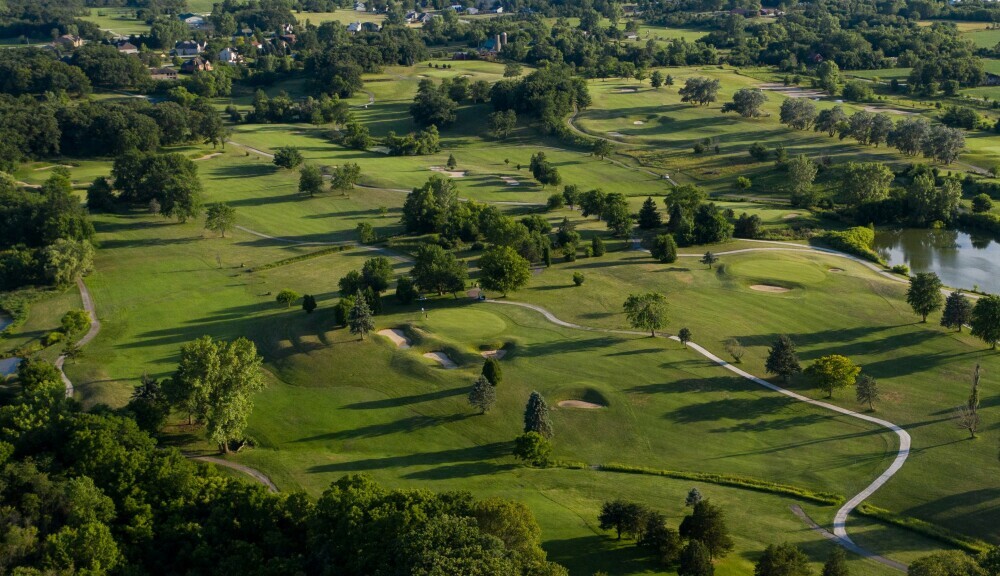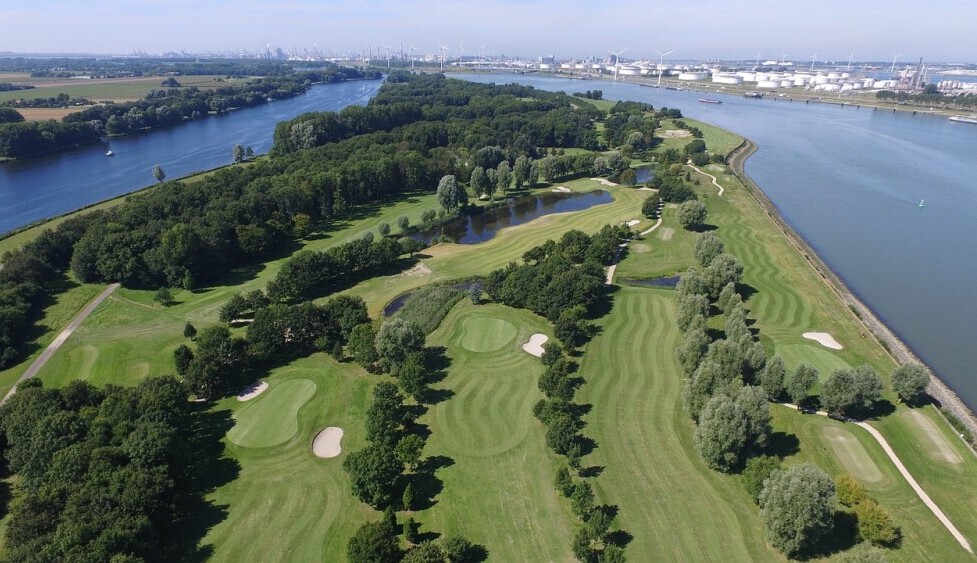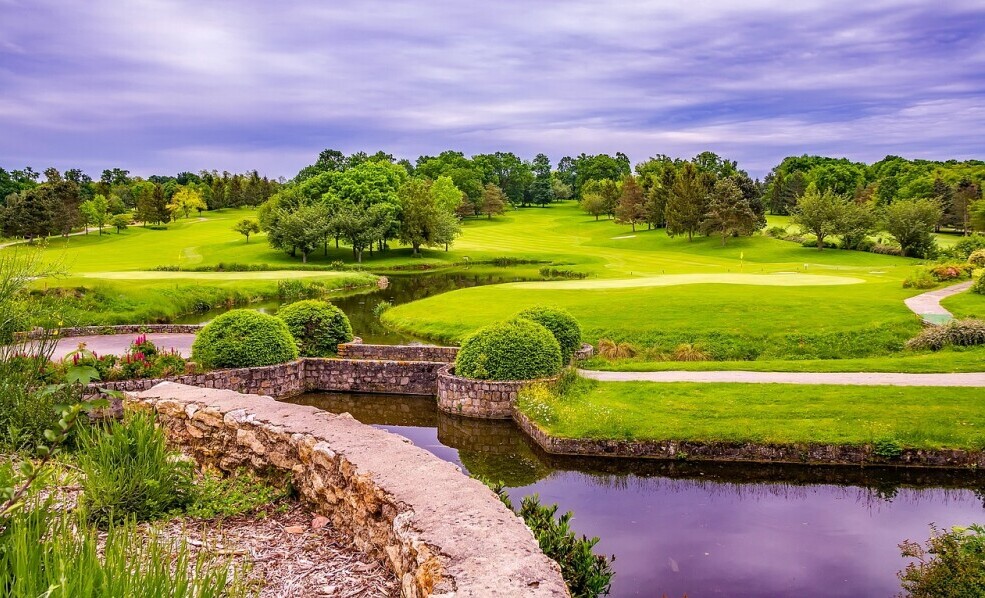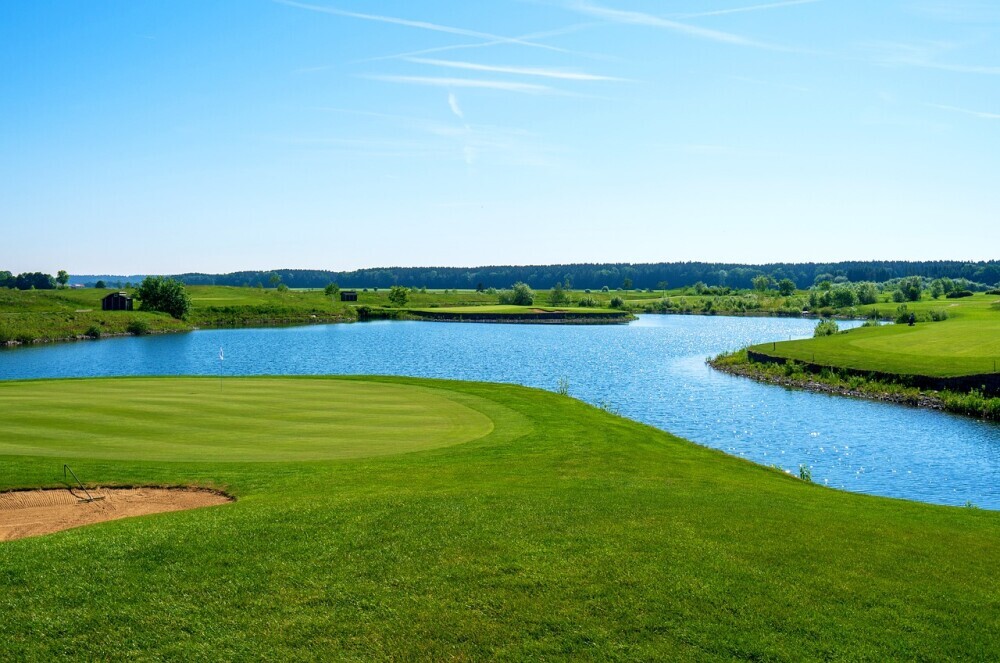What Is A Golf Course?


Fore! Quick note: a few links here are affiliate links. If you snag gear through them, I earn a small commission — no extra strokes added to your game.
A golf course isn’t just a place to hit a ball into a hole; it’s a carefully designed playground where nature and sport meet. Imagine sprawling greens scattered with diverse landscapes, each key to creating a challenging yet enjoyable game. Understanding what makes up a golf course is like checking out the blueprint of an architect’s vision—a blend of nature, creativity, and sport. The golf viking is here to talk about the golf course.
At its core, a golf course is a large area of land designed for playing golf, featuring a series of holes each composed of a teeing area, fairway, and putting green along with hazards. But it’s more than just layouts and paths. A golf course is where golfers of all skills come together to challenge themselves against friends, nature, and the designer’s ingenuity.
Every course presents its own challenges and terrain. It’s the designers job to take advantage of the beauty of the local landscape, and incorporate it seamlessly into a beautifully manicured work of outdoor art. Using the terrain in a way that creates a strategy process for golfers.
Travel back in time a bit and you’ll see golf courses have evolved. Originating in Scotland in the 15th century, these fields have transformed dramatically. Designs have shifted with history, reflecting regional landscapes, advancing golfing techniques, and changes in environmental considerations.
Each course tells stories of tradition and innovation. There have been countless courses designed and created over the years, with courses today boasting incredible achievements in landscape architecture.
Design and architecture play a huge role in how these spaces come together. Architects and designers plan every detail, from the curves of the fairway to the placement of sand bunkers and water hazards. The goal is to craft an experience that challenges golfers while showcasing the beauty of the surrounding environment and providing a suitable habitat for local wildlife.
Golf courses are designed to test not just your swing, but also your short game. Improve your scoring by focusing on short game mastery to handle tricky chips and putts around the green.
Ready to level up your golf game? Click here.

Navigating the Challenges: Holes, Fairways, and Terrain
The heart of any golf course lies in its holes, most traditionally numbering 18, but you might stumble upon courses with 9 or 27 holes too. Each hole presents its own series of challenges, from distance to obstacles, requiring players to strategize their way from tee to green. Every hole is unique, and forces golfers to take a shot by shot approach to their game.
Hitting the fairway isn’t just a phrase you’ve heard in movies, it’s a real deal on the course. Fairways are the well-maintained stretches of land that link the tee box to the green. The shorter grass makes it easier to hit the ball with precision. Ideal shot proximity to the green is often about controlling your line on the fairway. Staying on the fairway is giving you the best chance to hit a nice shot.
Courses can be as flat as a pancake or as hilly as a roller-coaster ride. Terrain diversity keeps things fresh and thrilling—it’s not just about mastering your swing, but adapting to the unique challenges that different landscapes throw your way. You will have to determine which kind of course is for you.
If you’re wondering about the course length, most fall between 6,000 to 7,000 yards, though this can vary greatly depending on the layout. Par is a guiding benchmark here, suggesting how many strokes a seasoned golfer might take to complete a round. This blend of course length and layout forms a dynamic playground that tests skill and patience.
Getting familiar with the nuances of the course’s design, including its hole count, fairway widths, and terrain types will not only help you out on the green but enrich your overall appreciation for the sport’s strategic depth. Now let’s get into the gritty…the hazard.
The layout of a golf course plays a huge role in how you approach the game. To succeed on any course, work on mastering the golf swing so you can adapt to different lies and shot types.

Nature’s Obstacle Course: Bunkers, Water, and Boundaries
Bunkers, or sand traps, are the classic headache for golfers. These sandy patches vary in depth and placement, strategically designed to test your precision and nerve. Once you’re in, getting out can be tricky. The key here is mastering your bunker shot technique, focusing on control and finesse. There is a whole art in designing bunkers and their placement, and many courses have found fame because of the way that the bunkers are done.
Water hazards add a splash of drama to any course. Lakes, streams, and ponds are common features. They’re scenic but can quickly elevate your score if your ball takes an unwanted swim. Knowing when to play it safe and when to go for broke is part of developing a savvy golfing strategy. This is another great way of immersing the natural landscape into the design of the course. Having streams and ponds hasn’t stopped golf course architects from getting creative!
The out of bounds areas, marked by stakes or fences, clearly define where not to tread. If your ball lands there, it’s time to take a penalty and send another shot from your last position. Understanding these limits is crucial to maintaining your score and keeping your game in check. Hitting your ball past these markers often will spell trouble on your scorecard.
Thoughtful course design considers safety and environmental impact, using these elements to create challenges without compromising the natural habitat. Balancing the human touch with nature’s canvas ensures a responsible yet stimulating course experience. So what’s the true benefit of a beautiful golf course?
Every golf course presents unique challenges, which is why players also focus on their physical preparation. Explore golf fitness for power, flexibility, and consistency to handle long rounds with better stamina and performance.

Beyond the Game: Benefits and Beauty of Golf Courses
Golf courses aren’t just playgrounds for the avid golfer; they’re green spaces that contribute to the environment. These landscaped areas support local flora and fauna and act as oases of biodiversity within urban spaces. They add a splash of green, helping combat the concrete jungle.
Hitting the links offers more than just a test of skill. It’s a chance to walk several miles, soaking up fresh air and engaging in aerobic exercise that boosts cardiovascular health. For many, the serene surroundings provide mental relief from life’s stressors, making it a holistic health experience. So getting out on the golf course can actually be healthy to your body and spirit. Let this be the explanation you give to your wife so that she will understand your golf obsession.
Golf courses are often at the heart of communities, offering a hub for social interaction and economic activity. They host tournaments and charity events, support local jobs, and draw visitors, boosting tourism and commerce in the area. This sense of community and purpose enriches the local lifestyle.
With its strategic allure and natural beauty, golf appeals to players across generations. Whether you’re a sprightly teen or seasoned retiree, golf courses offer a welcoming environment for all. Setting foot on a course awakens the competitor in everyone, promising a timeless challenge amidst stunning scenery.
In weaving nature with sport, golf courses create a unique blend of recreation and environmental stewardship. They offer places for challenge and relaxation, reminding us to appreciate both the game and the landscapes we play in. I’ll see you…well, on the golf course!
Once you know what a golf course is, the next step is learning how to play effectively on it. Our guide to how to break 90 in golf gives you practical strategies for lowering your score on any course.


